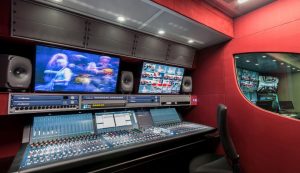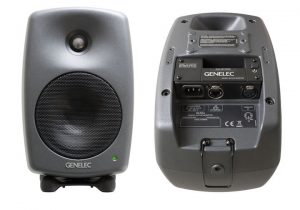SVG Europe Sit-Down: Genelec’s Howard Jones discusses sports broadcaster expectations and IP technology impact

Howard Jones, Marketing Director, Genelec
Since the founding of Genelec in 1978, professional audio monitoring has been the core of the company’s business. During the past decade, however, the business has expanded beyond the professional studio monitor segment to selected consumer and AV installation markets. As a result, Genelec’s products are found in an increasing number of home setups and AV installations, as well as in residential home theatre systems. Genelec has also been at the cutting edge of immersive audio, and visitors to recent trade shows have experienced the company’s monitors playing back material in a number of different formats. Our Sit Down with Marketing Director Howard Jones commenced with a question about the uniqueness of the products on offer…
What is particularly distinctive about the products you offer?
As a reference loudspeaker manufacturer, it’s a given that our goal is to deliver truthful, uncoloured audio reproduction that broadcast professionals can rely on. But I think what has made Genelec unique is the dedication to designing monitors that help the user compensate for the often unavoidable shortcomings in their audio environment. Back in 1978 our very first product – the S30 – had basic room compensation controls to help the engineer ‘tune’ the speakers to the room, and over the years that same philosophy has run through all the elements of our product design, from the speaker cabinet itself to the development of our GLM calibration software. We do everything we possibly can do to help the audio engineer make accurate and informed decisions – even in less-than-ideal listening conditions.
How have the demands for audio equipment for sports broadcasters changed over the last five years?
Over the years we’ve seen a trend towards products with smaller footprints – the average room size seems to be shrinking in most areas of professional audio! So ‘nearfield’ monitoring is the norm, and we’ve been focussed on squeezing some of the technical advantages of larger format loudspeakers into smaller and smaller packages. Our new Ones range is a case in point – these are the world’s smallest three-way monitors, so are perfect for an OB van which needs a monitor with razor-sharp audio imaging – but a really compact form factor. And with the increasing importance of the new surround sound formats in sports broadcasting, the need to fit an immersive monitoring system into a tight space absolutely demands small, premium performance speakers.
Where are we when it comes to remote audio production?

ARET Engineering chose the compact three-way 8331 monitors from The Ones range for a new OB truck
We see remote production and IP growing hand-in-hand, and obviously IP is a much talked-about technology in broadcast now with the technical and economic benefits being obvious to all. Back in 2010 we showed our first IP loudspeaker as a proof-of-concept, and it matured into the 8430 product that we’ve been shipping for a while now – so we’ve made sure that we’re ready and equipped to deliver the technology needed as the market demands it.
What impact do you expect audio over IP to have on broadcast audio over the next few years?
It will be very significant – we’re already talking to a number of broadcasters who are planning all-IP facilities next year and that’s definitely the direction of travel now. The adoption of AES67 as an audio standard has moved the conversation on even further, and interoperability is steadily improving. There is still much to do, and many challenges remain in educating the audio world in the complexities of IT, and vice versa. But the genie is out of the bottle now and it’s hard to see the rise of IP being halted in broadcast.
To what extent is there recognition in broadcast circles that audio needs to keep pace with visual developments like 4K – and, along the same lines, what level of sustained investment is needed to make this happen?
As audio guys, we would obviously always argue that the sound is at least as important as the picture – and we are definitely seeing that the interest in immersive audio technology is growing year on year. As picture quality improves it’s natural that the audio should keep pace to some extent, and we’re encouraged to see the adoption of immersive audio formats extend beyond the world of cinema into that of broadcast. You had only to sit in NHK’s IBC demo room this year and watch an 8K picture in conjunction with 22.2 audio to realise how audio envelopment is a fundamental part of a high-quality viewing experience.

The Genelec 8430 product delivers IP technology for audio
We think as Soundbars, surround-equipped TVs and headphone technology for the home improves and becomes more affordable, so the consumer’s appreciation of good broadcast audio will increase – and so for all those of us at the production stage, understanding and delivering higher quality audio will be essential.
Do you have a European based case study you can share?
Yes – ARET Engineering in Italy are a highly-respected integrator and OB truck supplier, and their new trailer demonstrates what is possible when you focus only on the highest-level technology and design, working in UHD with incredible sound to match. They chose the compact three-way 8331 monitors from The Ones range that I mentioned earlier. It’s a classic example of a potentially tricky acoustic environment – lots of glass panels, expanding sides and so on – and so neatly sums up how our products are helping broadcasters deliver great results even when the format of a room can be a challenging one!
